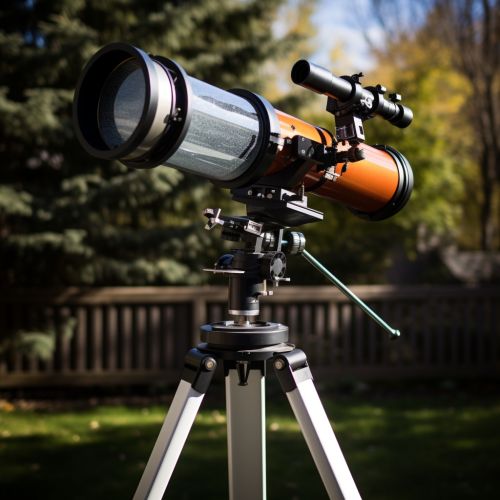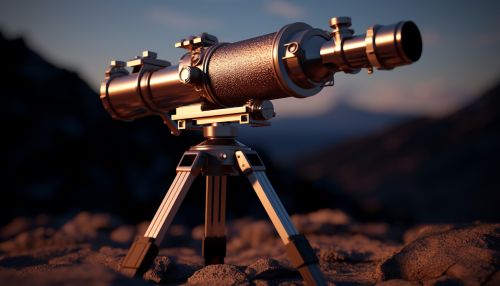Telescope
Introduction
The Telescope is an optical instrument that makes distant objects appear magnified by using an arrangement of lenses or curved mirrors and lenses, or various devices used to observe distant objects by their emission, absorption, or reflection of electromagnetic radiation. The first known practical telescopes were refracting telescopes invented in the Netherlands at the beginning of the 17th century, by using glass lenses. They found use in terrestrial applications and astronomy.


History
The earliest existing record of a telescope was a 1608 patent submitted to the government in the Netherlands by Middelburg spectacle maker Hans Lippershey for a refracting telescope. The actual inventor is unknown but word of it spread through Europe. Galileo heard about it and, in 1609, built his own version, and made his observations of celestial objects.
Types of Telescopes
Refracting Telescopes
A refracting or refractor telescope is a type of optical telescope that uses a lens as its objective to form an image. The refracting telescope design was originally used in spy glasses and astronomical telescopes but is also used for long focus camera lenses.
Reflecting Telescopes
A reflecting or reflector telescope (also called a Newtonian telescope) is an optical telescope which uses a single or combination of curved mirrors that reflect light and form an image. The reflecting telescope was invented in the 17th century by Isaac Newton as an alternative to the refracting telescope which, at that time, was a design that suffered from severe chromatic aberration.
Radio Telescopes
Radio telescopes are directional radio antennas used for radio astronomy. The dishes are sometimes constructed of a conductive wire mesh whose openings are smaller than a wavelength. Multi-element Radio telescopes are constructed using a number of smaller dishes that combine their signals, in a similar way to the type found in radio arrays.
Infrared Telescopes
Infrared telescopes have heavily insulated, tightly sealed structures to prevent warm air from the structure around the telescope from entering the light path. They are typically housed in a dome, which helps to prevent the telescope becoming affected by variations in temperature.
Ultraviolet Telescopes
Ultraviolet telescopes are best suited to the observation of hot and energetic objects, where most of the emissions take place at ultraviolet wavelengths.
X-ray Telescopes
X-ray telescopes can use X-ray optics, such as a Wolter telescopes made of ring-shaped 'glancing' mirrors made of heavy metals that are able to reflect the rays just a few degrees. The mirrors are usually a section of a rotated parabola and a hyperbola, or ellipse.
Gamma-ray Telescopes
Gamma-ray telescopes avoid the problems of atmospheric absorption of gamma rays by being carried by balloons or satellites.
Telescope Mounts
Telescope mounts are designed to support the mass of the telescope and allow for accurate pointing of the instrument. Many sorts of mounts have been developed over the years, with the majority of effort being put into systems that can track the motion of the stars as the Earth rotates.
Modern Telescopes
Modern telescopes typically use CCDs instead of film for recording images. This is the sensor used in digital cameras and is far more sensitive and can achieve much higher quantum efficiency than film. The Hubble Space Telescope has recorded some of the most detailed visible-light images ever, allowing a deep view into space and time.
Future of Telescopes
The future of telescopes in the next decade lies with Extremely Large Telescopes, several of which are being built in the Atacama Desert of northern Chile. These telescopes have primary mirrors 20–40 metres in diameter and will be much more sensitive than existing telescopes.
